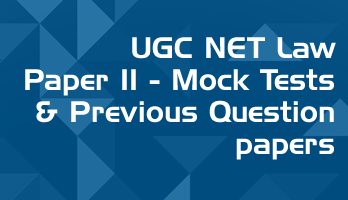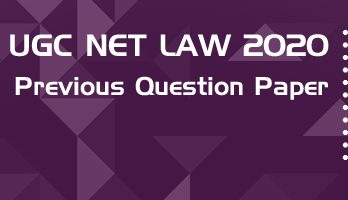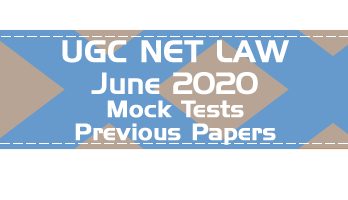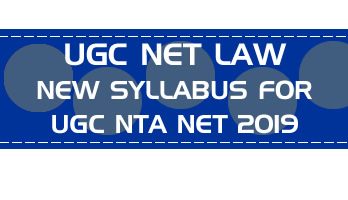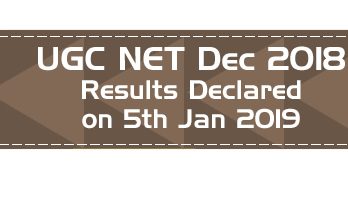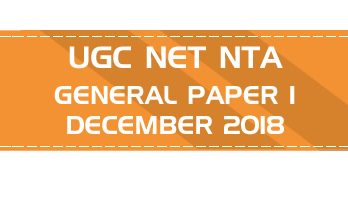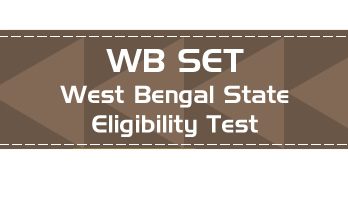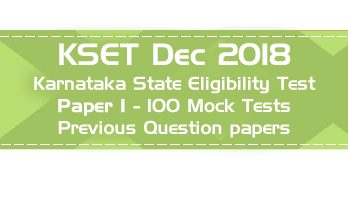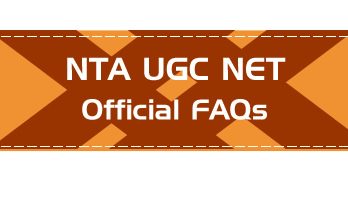- Latest Pattern Mock Tests including comprehension based questions
- Previous Question Papers with Answer Keys - From 2004 till the most recent exam
- 75 Full Length Mock Tests - New Pattern Paper II, with 100 questions each
- 50 Mini Practice Mock tests - with 25 questions each
- Unlimited Practice - New Questions in every attempt of all mocks
- Questions & Answer Choices randomly shuffled in every attempt for better practice
- Database of over 11000+ MCQs covering the entire syllabus
- Unlimited access and practice for one year from the date of purchase
- Accessible 24 x 7 via Smart-Phone browsers and Desktops
Authentic Feedback from previous LawMint users :
I got AIR 21 in CLAT PG. Thank you so much. Your mocks helped me a lot in my preparation 🙂 - Ayushi Jain
I have subscribed to your CLAT PG program and got AIR 36 in this year CLAT PG. I have also secured AIR 54 in AILET PG exam. I would like to thank you. Your mock paper really helps a lot - Shrashank Tripathi
I would like to thank you for the CLAT PG LLM COURSE. Practising mock tests there helped me in getting confidence and hence I was able to get AIR 45 in CLAT PG LLM - Akshay Awasthi
A year back, I relied on the IIT Kharagpur RGSOIPL mock test series by LawMint to prepare for my RGSOIPL entrance test. Few months back, I relied on your UGC NET Law series to prepare for UGC NET. I was the topper of the RGSOIPL entrance, and have cracked JRF in UGC NET. All thanks to LawMint - Anshuman Sahoo
"I got AIR 18 in CLAT PG and General Category rank 28 in AILET PG. I want to thank you for helping me practice well in controlled conditions from any place. It gave me a lot of confidence and I took the tests while travelling too. I also made it to IIT Kharagpur." - Vinodharani
"Lawmint has been of great help to me in securing AIR 25 in AILET PG and AIR 29 in CLAT PG examinations. The subjective and objective approach of the test series kept me up to date with the latest exam pattern." - Bhawna Nanda
"I, Nimmy Saira Zachariah joined you clat test series. I cleared AILET PG with 30th rank. Your test series were of immense help as it gave me clear idea of where my preparations stand thank you once again law mint." - Nimmy S Z
"Hey guys. Where do I start? If I thought that getting AIR 59 in Clat PG was it, then how wrong I was. With Lawmint now I have cracked UGC NET as well." - Joyanta Chakraborty
Q. In Islamic Law, marriage is both ‘Ibadt’ and ‘Mammulat’. Who said this?
– Amir Ali Justice
– Dr. Fayzee
– Abdur-Rahim
– Mahmood Justice
Q. A Muslim husband can delegate his right of Talaq to
– Any other person
– Wife only
– Both, Any other person and Wife
– None of the choices
Q. A Muslim minor wife can cease her right to repudiate the marriage in case:
– When she attained the age of puberty.
– When the marriage was consummated before attaining the age of puberty.
– When she is less than 18 years of age.
– None of the choices.
Q. Find correct answer using codes given below: Following are main approaches to explain nature and meaning of human rights:
(i) The scientific right theory
(ii) The moral right theory
(iii) The natural right theory
(iv) The legal right theory
– (i) and (ii) are correct.
– (ii) and (iii) are correct.
– (iii) and (iv) are correct.
– (iv) and (i) are correct.
Q. Read Assertion (A) and Reason (R). Find correct answer using codes given below:
Assertion (A): The purpose of Human Rights is to provide protection against the abuse of power committed by the organs of State.
Reason (R): Due to absence of Lok Pal the misuse of power by the State cannot be effectively checked.
– (A) and (R) are correct and (R) is correct explanation of (A).
– (A) and (R) are correct, but (R) is not correct explanation of (A).
– (A) is true and (R) is false.
– (A) is false and (R) is true.
Q. Match item in Table-A with items in Table-B using codes given below:
Table – A
(a)The first generation of Human Rights
(b)The second generation of Human Rights
(c)The third generation of Human Rights
(d)Theoretical approach to Human Rights
Table – B
(i) Idealistic Theory of Law
(ii) Collective Rights
(iii) Civil and Political Rights
(iv) Economic, Social and Cultural Rights
– a-(i) b-(iii) c-(ii) d-(iv)
– a-(iii) b-(iv) c-(ii) d-(i)
– a-(iv) b-(iii) c-(ii) d-(i)
– a-(iii) b-(iv) c-(i) d-(ii)
Q. In Indian Constitution, Civil and Political Rights given in its
– Part II
– Part III
– Part IV
– Part IX
Q. No one shall be subjected to arbitrary arrest, detention or exile. Above law is in
– Article 21 of the Indian Constitution
– Criminal Procedure Code
– Civil Procedure Code
– Article 9 of the Universal Declaration of Human Rights
Q. Read Assertion (A) and Reason (R) and find correct answer using codes given below:
Assertion (A): Advancement of rights of women has been the concern of world community since the end of Second World War.
Reason (R): In Second World War, population of men was significantly decreased.
– (A) and (R) are true and (R) is correct explanation of (A).
– (A) and (R) are true, but (R) is not correct explanation of (A).
– (A) is true and (R) is false.
– (A) is false, but (R) is true.
Q. Read Assertion (A) and Reason (R) and find correct answer using codes given below:
Assertion (A): The child must be given the means requisite for his normal development, both materially and spiritually.
Reason (R): Spirituality is material and material is spiritual.
– (A) and (R) are true and (R) is correct explanation of (A).
– (A) and (R) are true, but (R) is not correct explanation of (A).
– (A) is true, but (R) is false.
– (A) is false, but (R) is true.
Q. State which of the following statements is incorrect?
– Liability in tort arises from breach of duty primarily fixed by law.
– The duty, breach of which results in tortious liability, is towards the public generally.
– The duty, breach of which results in liability in tort, is towards some person in particular.
– The breach of duty, which results in liability in tort, is redressable by an action for unliquidated damages.
Q. The plaintiff was watching a cricket match at a stadium organized by the Cricket Club of India. He wasseriously injured by a mighty hitfrom the batsman. In this case, whois liable to pay the damages to the plaintiff?
– The Batsman
– The Cricket Club of India
– Both The Batsman and The Cricket Club of India
– None of the choices
Q. Which one of the following sets correctly identifies the specific defence available in an action for defamation?
– Privilege, Truth, Fair comment.
– Privilege, Mistake, Fair comment.
– Truth, Mistake, Fair comment.
– Truth, Privilege, Mistake.
Q. Read Assertion (A) and Reason (R) and with the help of codes given below, point out the correct explanation.
Assertion (A): Pleading lack of intention to defame someone does not absolve one from liability for defamation.
Reason (R): The essence of defamation lies in the lowering a person in the estimation of the right thinking members of the society, even without intention.
– Both (A) and (R) are true and (R) is the correct explanation of (A).
– Both (A) and (R) are true and (R) is not the correct explanation of (A).
– (A) is true, but (R) is false.
– (A) is false, but (R) is true.
Q. Assertion (A): In India, defendants collecting water in reservoirs have not been held liable for damage caused due to the escape of water from these reservoirs in absence of negligence.
Reason (R): The rule of strict liability laid down in Rylands vs. Fletcher case has been held to be not applicable in India.
Select the correct answer using the codes given below;
– Both (A) and (R) are true and (R) is the correct explanation of (A).
– Both (A) and (R) are true, but (R) is not the correct explanation of (A).
– (A) is true, but (R) is false.
– (A) is false, but (R) is true.
Q. Assertion (A): In tort of nuisance, interference by the defendant may cause damage to the plaintiff’s property or personal discomfort in the enjoyment of property.
Reason (R): Every interference in the use of property is a nuisance.
Select the correct answer using the codes given below:
– Both (A) and (R) are individually true and (R) is the correct explanation of (A).
– Both (A) and (R) are individually true, but (R) is not the correct explanation of (A).
– (A) is true, but (R) is false.
– (A) is false, but (R) is true.
Q. Match List-I with List-II and indicate the correct answer using the codes given below:
List – I
(a)Composition of the District Forum
(b)Complaint to be accompanied by court fee
(c)Jurisdiction of the State Commission
(d)Appeals from National Commission to the Supreme Court
List – II
(i) Section 10, C.P. Act
(ii) Section 17, C.P. Act
(iii) Section 23, C.P. Act
(iv) Section 12(2) C.P. Act
– a-(i) b-(ii) c-(iii) d-(iv)
– a-(i) b-(iv) c-(ii) d-(iii)
– a-(ii) b-(iv) c-(i) d-(iii)
– a-(iv) b-(iii) c-(ii) d-(i)
Q. Find correct legal principle from following statements:
– A company may do an act which is necessary for or incidental to the attainment of its objects or which is otherwise not authorized by the Act.
– A company may not do an act which is necessary for or incidental to the attainment of its objects which is otherwise not authorized by the Act.
– A company may do an act which is necessary for or incidental to the attainment ofits objects or which is otherwise authorized by the Act.
– A company may do an act which is unnecessary for or not incidental to attainment of its goals or which is otherwise barred by the Act.
Q. Match items from Table-A with items in Table-B, using codes given below:
Table – A
(a)Lakshmi Ratan Cotton Mills vs. J.K. Jute Mills Co., AIR1957 AII 311
(b)Automatic Self-cleansing Filter Syndicate Co. Ltd. vs. Cuninghame, (1906) 2 Ch.34
(c)G. Ramesh vs. ROC, (2007) 135 Comp Cas 655
(d)City Equitable Fire Insurance Company, Re, (1924) AII E Rep 485
Table – B
(i) Director’s duty of care, diligence and skill
(ii) Statutory protection to Directors against liability
(iii) Powers of Directors
(iv) Scope of authority of Directors
– a-(iv) b-(iii) c-(ii) d-(i)
– a-(iii) b-(ii) c-(i) d-(iv)
– a-(ii) b-(i) c-(iv) d-(iii)
– a-(i) b-(iv) c-(iii) d-(ii)
Q. Read Assertion (A) and Reason (R) and with help of codes given below, point out the correct explanation.
Assertion (A): A contract of sale may be absolute or conditional.
Reason (R): There is no absolute condition for a contract of sale.
– Both (A) and (R) are true and (R) is correct explanation of (A).
– Both (A) and (R) are true, but (R) is not correct explanation of (A).
– (A) is true, but (R) is false.
– (A) is false, but (R) is true.
Q. Where under a contract of sale the property in the goods is transferred from the seller to the buyer, the contract is called a sale, but where the transfer of the property in the goods is to take place at a future time or subject to some condition thereafter to be fulfilled, the contract is called an agreement to sell.
Read above statement and find correct answer, using codes given below:
– Contract of sale is conditional.
– Contract of agreement to sell is conditional.
– There is no difference between sale and agreement to sell, as both are contracts.
– Sale is a contract; agreement to sell is not a contract.
Q. Essential feature of a partnership is
(i) Agreement
(ii) Object to carry on a business
(iii) To share profits
(iv) Business is to be carried by all or any of them acting for all.
– Only (i) is correct.
– Only (i) and (ii) are correct.
– Only (i), (ii) and (iii) are correct.
– All of above are correct
Q. Find the correct legal statement from following statements:
– Every partner is liable, severally with all the other partners and jointly for all acts of the firm done while he is a partner.
– Every partner is liable, jointly with all the other partners and severally for all acts of the firm done while he is a partner.
– Every partner is liable only foracts done by him as acts of thefirm done while he is a partner.
– Sleeping partner is not liable for acts done by him as acts of the firm done while he is a partner.
Q. Read Assertion (A) and Reason (R) and with help of codes given below, point out the correct explanation.
Assertion (A): It is the duty of the banker to be acquainted with the customer’s handwriting.
Reason (R): A banker must be hand writing expert.
– Both (A) and (R) are true and (R) is correct explanation of (A).
– Both (A) and (R) are true, but (R) is not correct explanation of (A).
– (A) is true, but (R) is false.
– (A) is false, but (R) is true.
Q. When a negotiable instrument is dishonored, the party liable to pay, becomes bound to pay compensation to
– The bank
– The endorser
– Holder or endorsee
– The Court
Answer to this UGC NET Law question paper and all other UGC CBSE NET previous papers published on LawMint.com are available for registered users of our Online Mock Tests.
Check out the other articles on LawMint.com for details about UGC NET Law syllabus, online practice material, previous year question papers, mock tests and sample papers.
Read this article for the complete summary of the UGC NET Law – Official Syllabus, Important Topics, Recommended Books and Questions papers
If you want to download a free pdf copy of this question paper, you can use the print to pdf option in your computer.
- Latest Pattern Mock Tests including comprehension based questions
- Previous Question Papers with Answer Keys - From 2004 till the most recent exam
- 75 Full Length Mock Tests - New Pattern Paper II, with 100 questions each
- 50 Mini Practice Mock tests - with 25 questions each
- Unlimited Practice - New Questions in every attempt of all mocks
- Questions & Answer Choices randomly shuffled in every attempt for better practice
- Database of over 11000+ MCQs covering the entire syllabus
- Unlimited access and practice for one year from the date of purchase
- Accessible 24 x 7 via Smart-Phone browsers and Desktops
Authentic Feedback from previous LawMint users :
I got AIR 21 in CLAT PG. Thank you so much. Your mocks helped me a lot in my preparation 🙂 - Ayushi Jain
I have subscribed to your CLAT PG program and got AIR 36 in this year CLAT PG. I have also secured AIR 54 in AILET PG exam. I would like to thank you. Your mock paper really helps a lot - Shrashank Tripathi
I would like to thank you for the CLAT PG LLM COURSE. Practising mock tests there helped me in getting confidence and hence I was able to get AIR 45 in CLAT PG LLM - Akshay Awasthi
A year back, I relied on the IIT Kharagpur RGSOIPL mock test series by LawMint to prepare for my RGSOIPL entrance test. Few months back, I relied on your UGC NET Law series to prepare for UGC NET. I was the topper of the RGSOIPL entrance, and have cracked JRF in UGC NET. All thanks to LawMint - Anshuman Sahoo
"I got AIR 18 in CLAT PG and General Category rank 28 in AILET PG. I want to thank you for helping me practice well in controlled conditions from any place. It gave me a lot of confidence and I took the tests while travelling too. I also made it to IIT Kharagpur." - Vinodharani
"Lawmint has been of great help to me in securing AIR 25 in AILET PG and AIR 29 in CLAT PG examinations. The subjective and objective approach of the test series kept me up to date with the latest exam pattern." - Bhawna Nanda
"I, Nimmy Saira Zachariah joined you clat test series. I cleared AILET PG with 30th rank. Your test series were of immense help as it gave me clear idea of where my preparations stand thank you once again law mint." - Nimmy S Z
"Hey guys. Where do I start? If I thought that getting AIR 59 in Clat PG was it, then how wrong I was. With Lawmint now I have cracked UGC NET as well." - Joyanta Chakraborty


